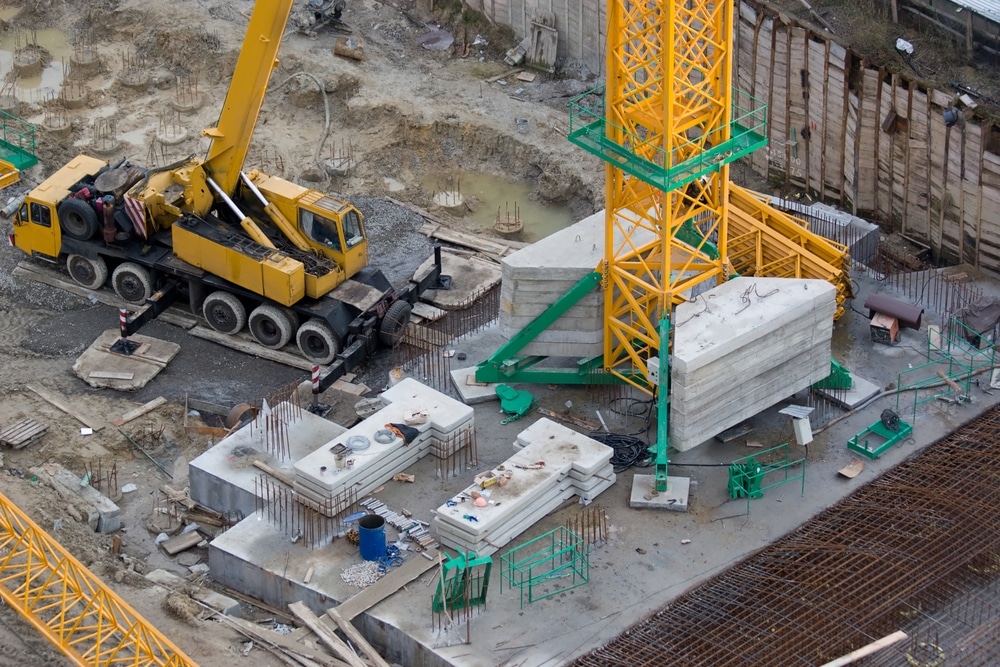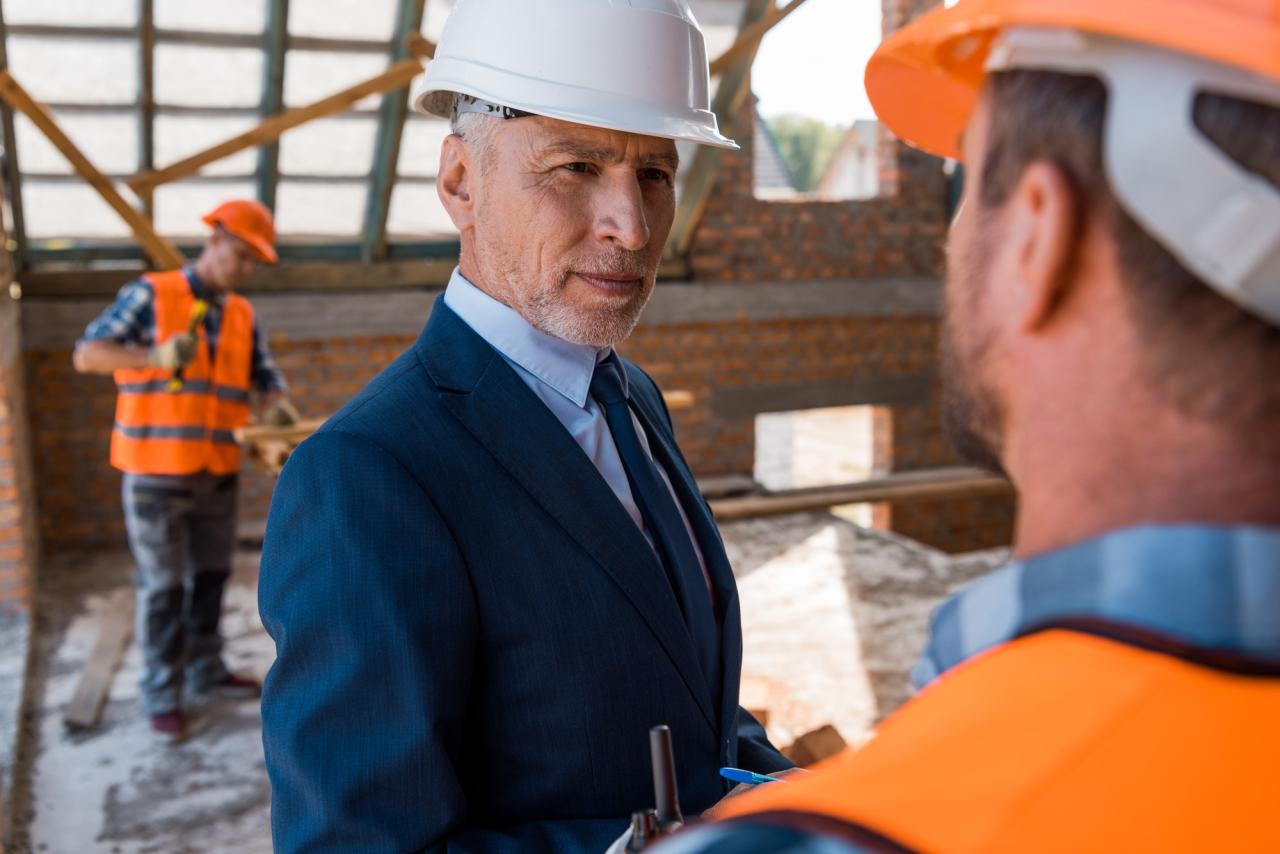Introduction
Project management is the basis on which every construction project is founded. A construction project manager has to obtain a variety of skills and competencies in order to navigate through the project and to establish a functional connection with the numerous teams. Construction projects have a continuous need for alterations and in that sense project management is key to the stability of the whole procedure. In this article, we will try to walk you through the vital concepts and principles around construction project management.
Free eBook: Unveiling the Path to Digital Transformation in Construction
What does construction project management (CPM) mean?
Construction project management could be defined as the direction, regulation, and supervision of a project from early development to completion. The ultimate goal of construction project management is the full satisfaction of the client’s demands for a viable project both in terms of functionality and budget. There is a wide range of construction project types, such as commercial, residential, industrial and heavy civil.
The main concept of construction project management is closely connected to technical parameters like budget and execution but it also requires solid communication between all the agents (stakeholders, contractors, community).
The role of a construction project manager
A construction project manager is responsible for planning, coordinating, budgeting and supervising projects from the beginning to the end. In short, a construction project manager has to take care of the following:
- Put together the budget and negotiate cost estimates
- Arrange the work timetables
- Choose the most efficient construction method and strategies
- Stay in touch with the clients for work or budget-related issues
- Discuss technical and contract details with workers and other professional parties
- Keep an eye on the personnel in construction onsite
- Cooperate with building and construction specialists
Contractor: Role and duties
The construction project manager chooses the contractor of the project as soon as the design is completed. In some cases, this can happen even when the project is still in development. The selection is based on an auction process with various contractors. There are three prevailing methods based on which a contractor is picked: low-bid selection, best-value selection, and qualification-based selection.
Contractors should be able to deal with deadlines, budget issues, public safety, decision making, quality management, working drawings, human resources, and mathematics.
Construction project management: The primary functions
Construction management is typically extended to a plethora of different functions. The most important of them could be summarized to the following:
1. Specification of the project goals and the plans including drawing of scope, scheduling, budgeting, deciding upon achievement requisites and choosing project participants.
2. Boost of the resource effectiveness through the acquisition of the workforce and of the necessary equipment.
3. Conduction of numerous operations through legitimate coordination and management of contracting, planning, estimating, design, and construction during the whole procedure.
4. Efficient development of solid communication between the agents for resolving any conflicts that may arise.
The main principles of construction project management
It’s no secret that construction project management is a quite complicated field. However, there are some fundamental principles that anyone who just entering the field should keep in mind.
More to read: 6 keys to staying competitive in a digitised environment
Everything starts with the project owner reaching out to contractors in order to ask for bids. The managers of construction that are interested in carrying out the project will, then, offer a bid to the owner. The bid will include details about the amount of money that the project owner has to offer for the project to be completed. There are two types of bids:
1. Open bid: Open bids are inextricably connected to public projects. It’s an auction where any contractor is welcome to make his offer. An open bid is normally openly promoted.
2. Closed bid: Private projects are based on closed bids. The project owner sends a bid invitation to a specific number of contractors.

After receiving all the bids for the particular project, the owner proceeds to the selection of the contractor through one of the following three methods:
1. Low-bid selection: In that case, the main focus of interest is the price. The construction management companies present the lowest bids they are open to complete the project for. The project owner selects the lowest offer and proceeds with it.
2. Best value selection: This process puts weight both on qualifications and price. The owner is choosing the most appealing bid both in terms of quality and money.
3. Qualifications-based selection: The present method is adopted when qualifications are used as the only criterion for the selection of the construction management company. A request for qualifications (RFQ) helps the owner in order to acquire further information regarding the experience and the project organization competencies of the contractor.
Contract types
When the selection procedure is completed, the type of contract has also to be agreed upon. Normally, there are four contract types:
1. Lump-sum: The most popular kind of agreement. The owner and the contractor set a fixed price for the whole project. The price remains the same even if the total cost of the project is proven to be higher or lower than the agreed amount.
2. Unit price: When there are objective difficulties in deciding the final price in advance, this method is preferred. The project owner offers materials with a particular unit price in order to reduce spending.

3. Cost-plus fee: A cost-plus-fee contract is the best contract agreement for contractors. On top of the project’s total cost and the agreed fixed fee for the contractor, any other unpredictable expenses have to be covered by the owner in the end.
4. Guaranteed maximum price: The last type of contract doesn’t differ much from the previous one. The key difference is the maximum set price which can’t be surpassed in this case.
Project management processes
The bidding process is over and now it’s time for all the people involved in the project to make it happen. In general, every project has a standard life cycle, regardless of its special characteristics. This structure could be outlined in four basic stages:
1. Project initiation
During the first phase, the objective and the feasibility of the project are determined. This is a crucial stage of the whole process since it can indicate whether this project is a good opportunity or not. If necessary, a feasibility study is conducted and based on its results a recommended solution/plan is issued.
Once everything is decided, a project initiation document (PID) is created. The project initiation document provides the groundwork for the construction plan and is one of the most vital artefacts in project management.

Explore LetsBuld today!
2. Planning phase
The project planning stage is where the team singles out all the work to be done. It’s an ongoing activity almost to the end of the project. The main priority, during the planning phase, is to plan time, costs and resources for the project. Based on those requirements the team is developing the strategy that has to be followed.
This is also known as scope management. Another important document that has to be prepared is a work breakdown structure (WBS), a checklist that divides all the necessary work into smaller more functional categories (you can do that in our construction scheduling software).
As soon as the budget, schedule, and work have been defined the project is almost ready to begin. The next step of this really important process is risk management. At this point, the team should examine all the potential threats for the project and come up with solid solutions. Finally, a communication plan is, also, necessary as it will establish an efficient information flow between the project stakeholders.
3. Execution phase
In the execution phase, the construction project management plan is put to work. As a rule, this phase is divided into two main processes: the executing and the monitoring and controlling. The project team makes sure that the required tasks are being performed. At the same time, progress is monitored and changes are being made accordingly.
As a matter of fact, a project manager spends most of the time in the step of monitoring and depending on the information that he gets redirects the tasks and maintains the control of the project.
4. Closing phase (closure)
The final stage of the project represents its official completion. The project manager is evaluating what went well and refers to any potential failures. In the end, the team conducts a project report, calculates the final budget and offers information about any tasks that remain unfinished.
The project report in combination with the analysis of the potential failures will be valuable feedback for future construction projects.
Project scheduling
Reliable scheduling can eliminate many risks that may come up during a construction project. The main goal of scheduling is to improve the allocation of materials and resources within a project. In that way, any potential delays can be avoided and better communication between all the different parties could be ensured. There is a certain number of different scheduling techniques that a project manager could select:
1. Gantt Charts: It is, without doubt, one of the most practical systems that a project team can have at its disposal. A Gantt Chart can offer you an overview of a construction project and let you know about tasks that are left behind or being completed on time. Gantt Charts are also an indispensable component of LetsBuild.
Explore LetsBuld today!
2. Line of balance scheduling: The line of balance technique is an extremely useful method for repeated tasks. It can provide remarkable help in meeting deadlines and assigning resources effectively.
3. Critical path method: It’s one of the most popular scheduling tools and it helps a lot towards the systematic distribution of resources and accurate calculation of timelines. In a nutshell, a critical path method can contribute to the earlier or at least on-time completion of your construction project.
4. Q-Scheduling: This construction scheduling method is becoming more and more well-known lately, as it allows project managers to put numerous, and sometimes conflicting tasks, in the right order.
Budget in construction project management
Defining the budget is by far one of the most fundamental parameters that should be taken into consideration when you start putting together a construction project. The estimation of the cost can be a quite challenging task but if done correctly it can be one of the keys to success. As a rule, there are four basic parameters that a project manager should keep in mind:
1. Analysis of the project: The first action that has to be taken is the clarification of the different objectives and limitations for the upcoming project. Once you do that, you can have a better idea of what you want to achieve and who exactly do you need in order to do it.
2. Estimation of the budget: After having put all the priorities of your project in order, it’s time to organize your budget in conjunction with a solid timeline. Now it’s also a good time to ask for bids from interested contractors.

3. Monitoring of the cost: As soon as the construction project is put to work, it’s very essential to start keeping an eye on project costs. The sooner you start doing this the better since it will allow you to detect any potential misuse of resources before it’s too late.
4. Accounting: Having a highly competent accounting department is vital. In collaboration with the project team, they will be responsible for keeping all the financial agreements running according to plan.
The Legal Aspect of a Construction Project
A construction project consists of many different details. One of the most vital that no project manager should overlook has to do with its legal parameters. A well-prepared construction project manager should always be in a position to offer answers to potential legal disputes or risks that may emerge.
In that way, the whole project is secured and built on strong foundations. In general, there are five main areas that should be taken into consideration:
1. The parties: This category refers to anyone who is involved in the construction project (contractors, consultants, sub-contractors, purchasers, etc.)
2. Contracts: Even though there are certain fixed contract forms for construction projects, many times there is a need for changes in the agreements so legal advice is more than necessary.

3. Legislation & Regulation: A solid legal team can make sure that all the different legislations and regulations are followed properly.
4. Procurement: The procurement process refers to the purchase of all the different materials and services that are necessary for a construction project. It is crucial, then, that the whole project is thoroughly regulated from a legal aspect.
5. Insurance: It’s no secret that there are plenty of physical dangers on a construction site. That’s why a project manager should have been informed and taken care of every little detail concerning the insurance agreements.
Conclusion
Putting a construction project together is a really challenging effort. There is a plethora of parameters and elements that should be exhaustively analyzed. That’s why it’s crucial to trust the management of your project to a construction management software that will make your life easier and that at the same time will give you the opportunity to take your construction plan to a whole new level.
While managing a construction project involves numerous complex processes and considerations, LetsBuild offers a streamlined, efficient solution. Our platform simplifies project management by providing tools for scheduling, project tracking, communication, document management, and more. Embracing LetsBuild means embracing innovation and efficiency, ensuring your project stays on track, on budget and meets all its objectives. Experience the difference by choosing LetsBuild for your next construction project management needs. Book your demo today with our team!




